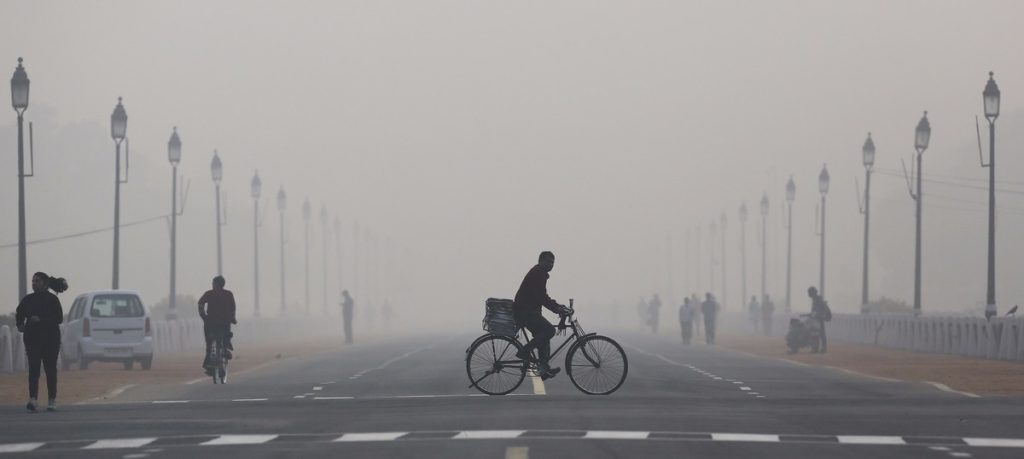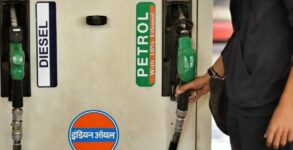Residents of the national capital are quite adept and resilient. They spend summers and monsoons battling mosquitoes and dengue. Come the wedding season and many brave the endless jams of their daily commute. They wait for VIP movements and reroute to avoid congestions due to numerous events. Yet the residents can and have reached the limits of their tolerance. They are being choked. Literally.
A few days ago Delhi woke up in a blanket of haze. At first instance and from inside the house it looked liked it was the onset of winter. The sun shining through the whiteness looked beautiful even. However, it quickly became apparent that this was not the case. As people stepped out or opened windows the poisonous haze crept in, leading to wheezing, difficulty breathing, burning eyes and itchy throats.
Levels of PM 2.5, most dangerous particles that can lead to allergies, asthma and other respiratory elements because they can penetrate deep into lungs and the bloodstream, reached 700 micrograms per cubic meter on Monday and continued to rise in some places up to 1000 or more. This is 16 times the limit that is considered safe by the Indian government. This is far beyond “hazardous level” of 300, according to data from the US embassy’s real-time pollution monitoring system. Compared to this, major Indian cities have a fraction of these levels: Chennai (180), Kolkata (176), Mumbai (130) and Bengaluru (115). To put this in international perspective, last year, with pollution less than half the level currently in Delhi, Paris had declared public transport free and put measures in place to phase out diesel engines.
Schools in Delhi have been closed until Sunday and the air quality is expected to get worse. The announcement was made by Deputy Chief Minister Sisodia who added that this may be extended. The Indian Medical Association has asked the Delhi government to also stop all outdoor activities and sports in schools. The IMA has also asked for the cancellation of Airtel’s Delhi Half Marathon. The blinding smog is already causing traffic accidents and injuries. The Delhi Airport also witnessed long delays and many cancelled flights due to poor visibility and CISF has ordered around 9000 masks for jawans on duty.
Delhi has turned into a gas chamber overnight. The damage through this exposure is equivalent to smoking more than two packs of cigarettes a day. Children, the elderly, pregnant women, people with allergies, asthma or respiratory ailments and anyone who is immune-compromised are particularly vulnerable. People spending long hours in commute or whose job requires working in outdoor spaces are also most exposed. Apart from immediate irritation, burning and breathing problems, there are serious life-threatening effects of being exposed to this toxicity, especially cancer risk, long-term lung damage, emphysema and pneumoconiosis.
The main reason for the present smog is said to be stubble burning in the neighbouring states of Punjab and Haryana. However, Delhi air is already polluted and sometimes the smog crosses the hazardous levels even before the burning starts. To combat this, this year the Supreme Court ordered a ban on firecrackers this Diwali. It was met with mixed reactions. High traffic with a high car density and open garbage burning means that Delhi is anyway extremely polluted. It is additionally surrounded by thermal power plants and polluting industries that often flout norms.
While the Delhi CM has appealed to stop the stubble burning and farmers are being fined and police cases filed on them, most have little choice in the matter. If the farmers use traditional sickle-harvesting and manual threshing plus cleaning it will be extremely labour intensive and costly. It may also delay the next sowing and cause losses. For incorporating the stubble back in the soil, heavy machines costing lakhs of rupees are needed.
Long-term measures need to be thought out for dealing with this serious public health crisis. To stop stubble burning governments must invest in the machinery needed so that the burden doesn’t fall only on farmers and alternate cleaner measures must be incentivised. Public transport needs to be encouraged as far as possible. It should be made affordable, safe, and extensive. Stricter norms and their compliance must be ensured for factories and industrial units around the NCR area. In any case, India should be trying to move away from coal-based plants to cleaner and greener renewable forms of energy. Research and investments made in green energy can go a long way in cleaning the air we breathe.
Disclaimer: The opinions expressed in this article are the personal opinions of the author. The facts and opinions appearing in the article do not reflect the views of NEWSD and NEWSD does not assume any responsibility or liability for the same.

















